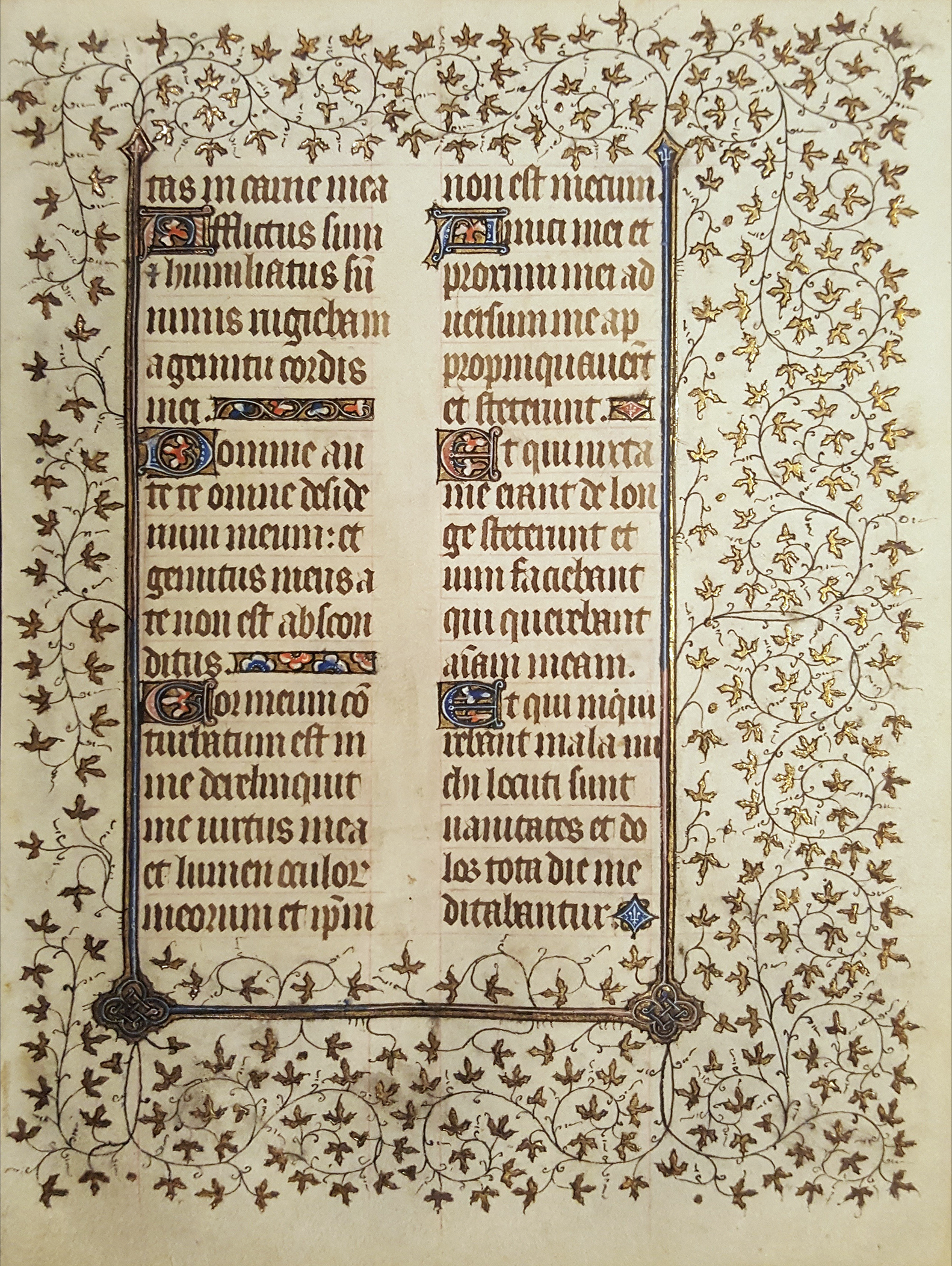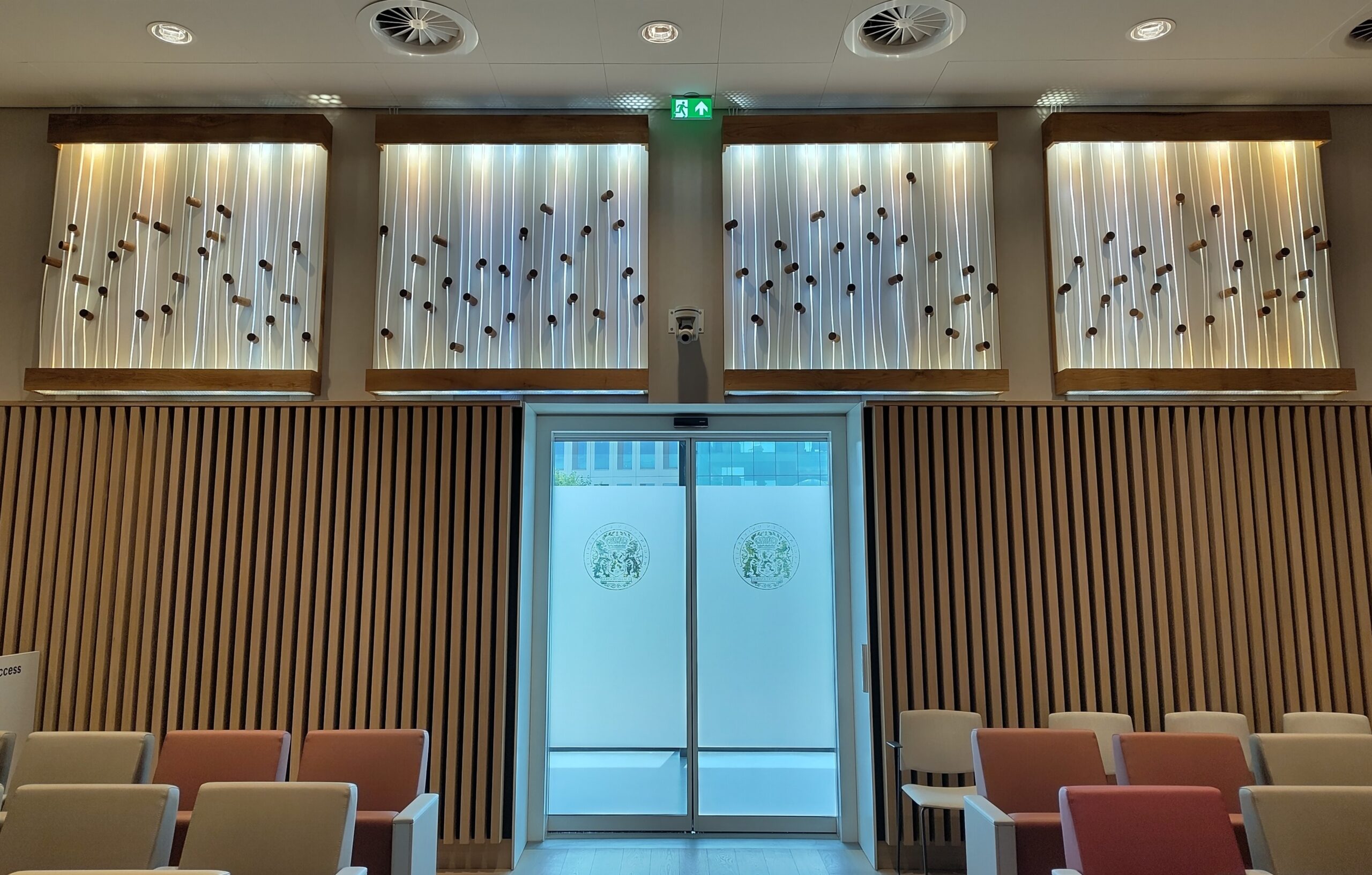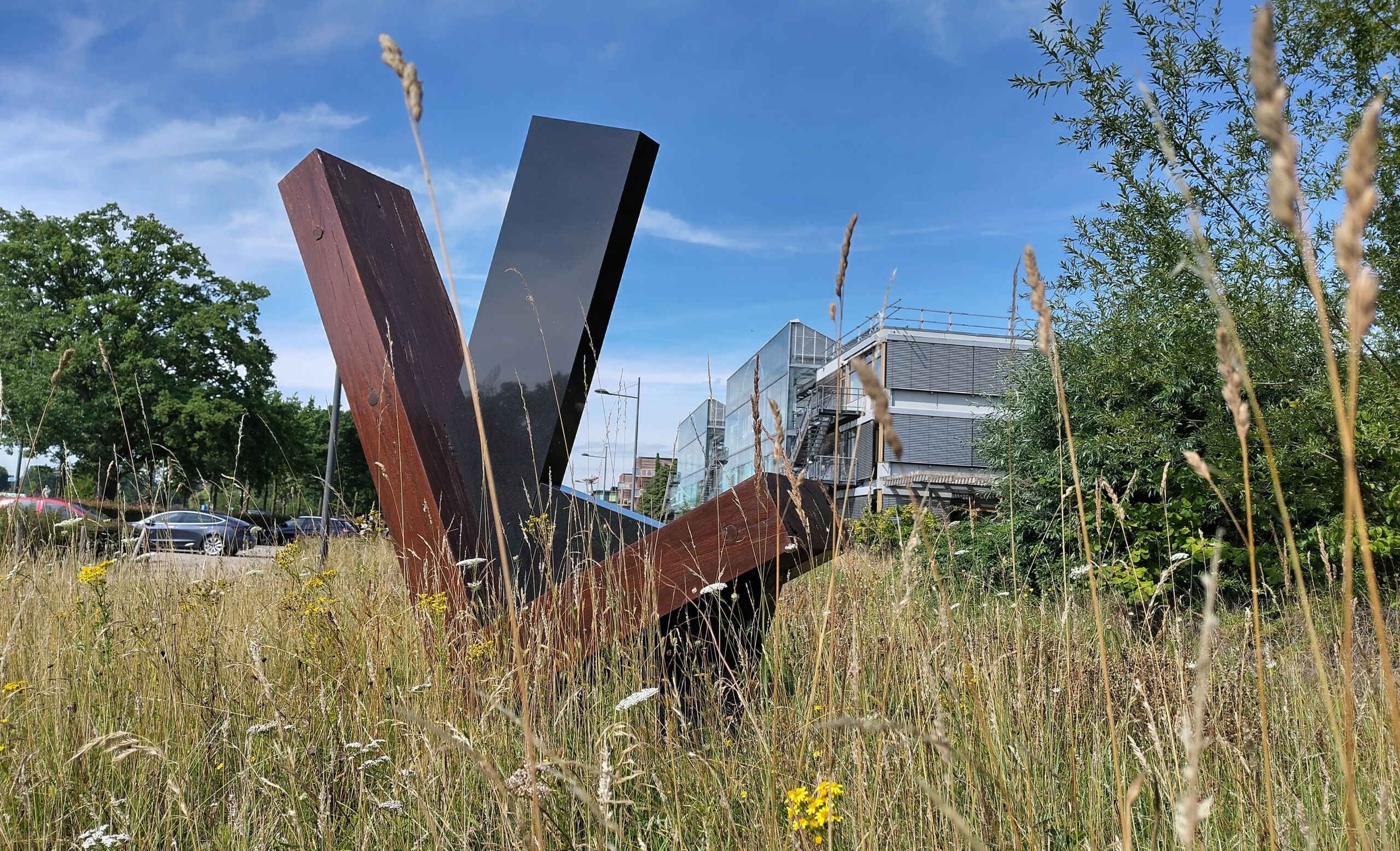You are likely to pass at least one of the many art pieces on Wageningen campus. What is it? Who made it? What does it convey? Student editor and amateur artist Maurice Schoo discusses striking works of art with WUR’s Art and Heritage conservator Joke Webbink.
Seven large metal cauldrons are, seemingly haphazardly, scattered across the Atlas lawn. Occasionally, someone will stand still at one of the pots and take a look inside, call out into it or attempt to kick a football through its opening. What do these pots signify? Joke Webbink: ‘The installation is called ‘the dance of the cauldrons’. The story behind it is that Wageningen, as an agricultural university, plays an important role in feeding the world. Hence, there are seven cauldrons, one for each continent.’
Costerweg
The pots were made by Bas Maters (1949-2006). Although they have been made of aluminium, the surface has been made to look like bronze. ‘They were originally located around the former university headquarters on the Costerweg, and were moved to the campus in 2011’, Webbink states. ‘All employees were gifted a miniature of the pots in 1998 to mark the university’s eightieth anniversary.’
Bas Maters has many works in public spaces, such as the monument for film-maker Joris Ivens in Nijmegen, the Gelderse Blom in Veenendaal and the Poort van Nieuwegein along the highway near Nieuwegein.
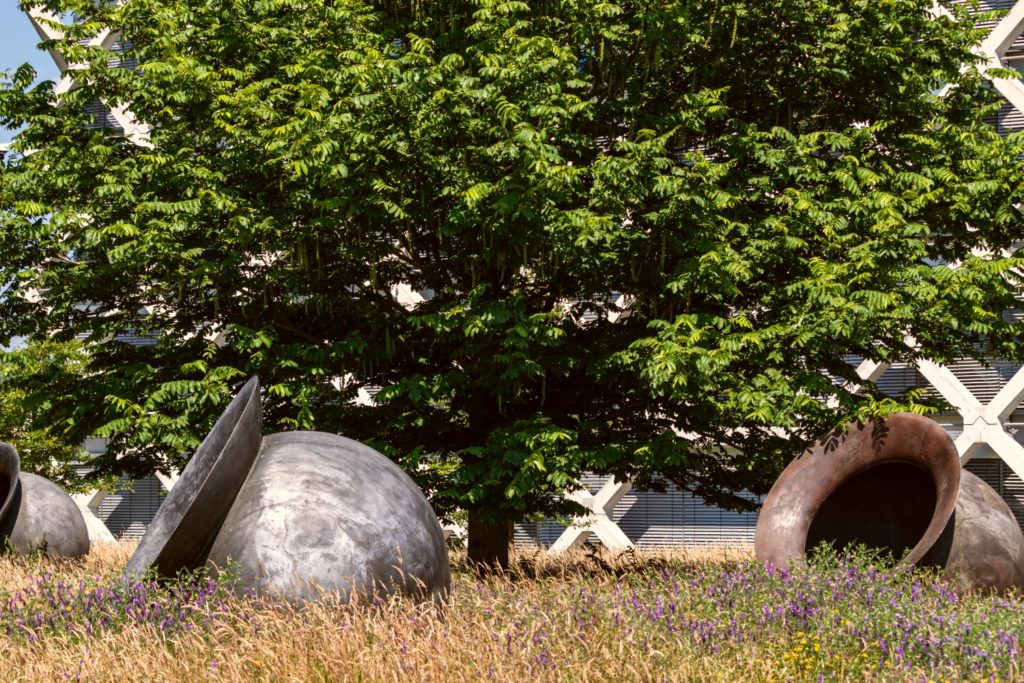

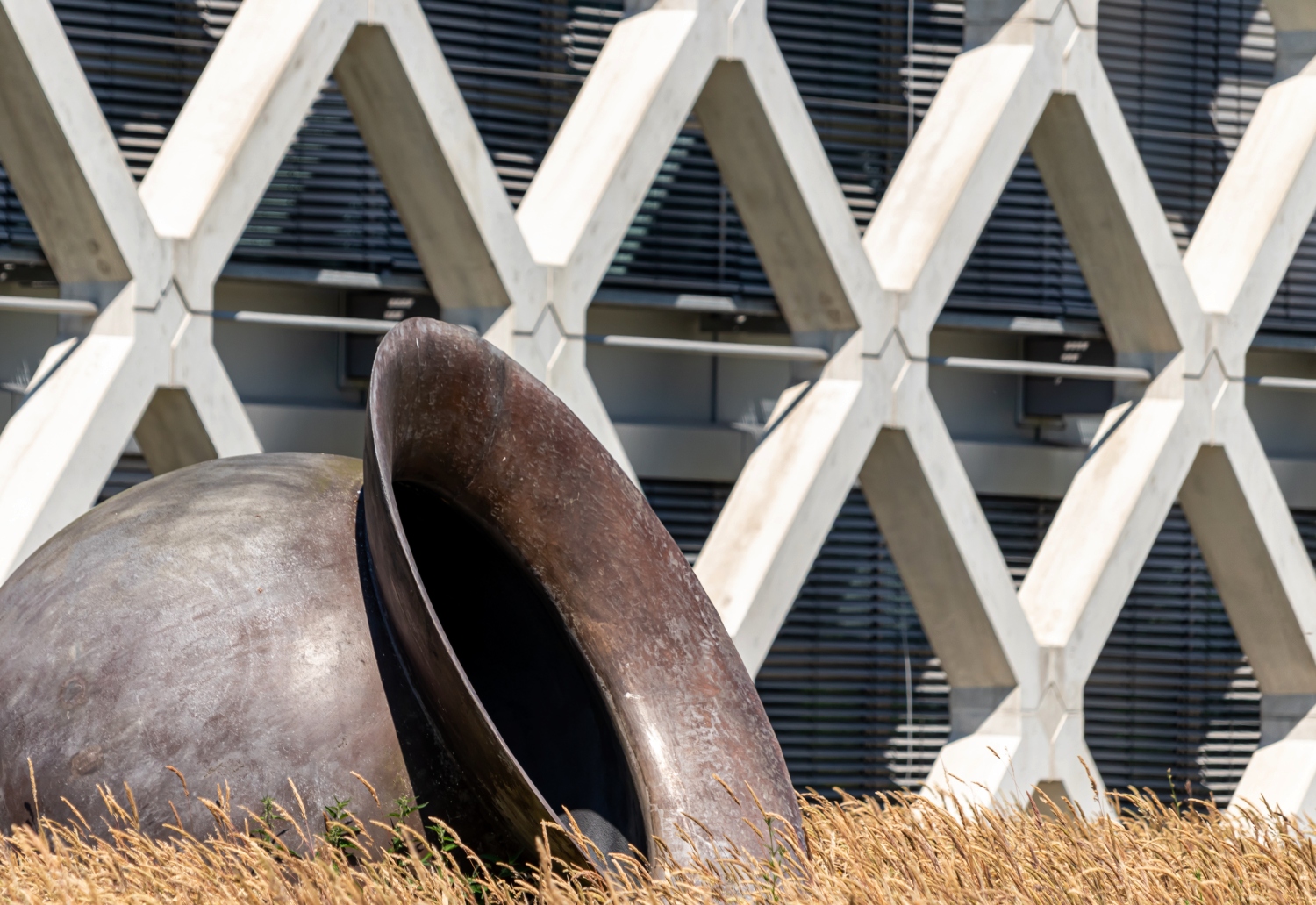 Art installation ‘The dance of the cauldrons’ (detail) by Bas Maters. Photo Joaquina
Art installation ‘The dance of the cauldrons’ (detail) by Bas Maters. Photo Joaquina 